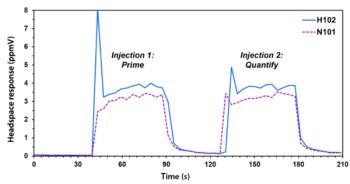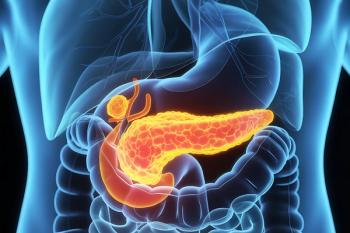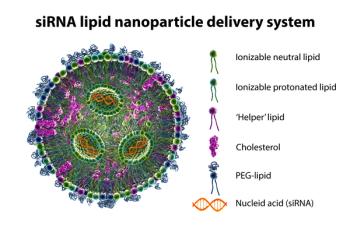
Simultaneous Screening of Pesticide Residues in Date Fruits with UHPLC–MS/MS and GC–MS/MS
Comprehensive information was derived through the utilization of a QuEChERS-UHPLC–MS/MS and GC–MS/MS method for the detection of 211 volatile and stable pesticide residues in 90 date fruit samples.
The simultaneous analysis of 211 pesticides using a quick, easy, cheap, effective, rugged, and safe (QuEChERS) method coupled with gas chromatography–tandem mass spectrometry (GC–MS/MS) and ultrahigh-performance liquid chromatography–tandem mass spectrometry (UHPLC–MS/MS) in 90 fresh date fruit samples produced in Kerman Province of Iran was performed, with probabilistic estimates of non-carcinogenic and carcinogenic health risks evaluated using Monte Carlo simulation-based hazard quotient (HQ), hazard index (HI), and carcinogenic risk (CR). The risk assessment results indicated that pesticide residue of pesticides in date fruits poses no potential risk to human health. A paper based on this study has been published by Scientific Reports (1).
Previous studies have revealed that pesticides have harmful and toxic effects on humans and other species (2,3). While in some cases very low levels of pesticides are used to control or eliminate pests, their residues can be found in the soil, water, air, and the food chain (4,5).
The fruit of the date plant contains high levels of nutrients and carbohydrates (6,7) and is sold in a variety of forms, including juice, paste, alcohol, vinegar, lavash, syrup, powder, coffee, kernel powder, animal and poultry feed, and agricultural fertilizer (8). Date fruit is a strategic product because of the creation of transformation industries and job creation credited to it, the assistance to the preservation of resources and the environment by its cultivation, and money earned from its export (9,10).
The authors of the paper state that the use of a QuEChERS UHPLC–MS/MS and GC–MS/MS method permits the detection of both the most volatile and stable pesticide residues in date fruits. In addition, the technique offers rapidity, simplicity, and elevated sensitivity, and facilitates the identification of most compounds in a single analysis.The method described satisfies the conditions for high-throughput detection of pesticide residues in date fruits, acting as a benchmark for the assessment of pesticide residues in additional date fruit varieties (1).
In the opinion of the authors, it is crucial to emphasize that the achieved percentage of recoveries for most analyzed pesticides ranged from 77% to 119% and that the results of the risk assessment revealed that HQ values of < 1 for all pesticide residues were present in date fruit samples for both adult and child consumers. The HI in adults and children were 0.060 and 0.280 in date fruit real samples, respectively. The risk assessment results of this study therefore indicate that pesticide residues in date fruits pose no potential risk to human health (1).
References
1. Basij, M.; Tezerji, N. S.; Shirani, M.; Mahdavi. V. Simultaneous Screening of 211 Pesticide Residues in Date Fruits in Iran and Health Risk Assessments Based on Mont Carlo Simulation. Sci. Rep. 2025, 15 (1), 6545. DOI:
2. Hassaan, M. A.; El Nemr, A. Pesticides Pollution: Classifications, Human Health Impact, Extraction and Treatment Techniques. Egypt. J. Aquat. Res. 2020, 46 (3), 207–220. DOI:
3. Camara, M. A.; Fuster, A.; Oliva, J. Determination of Pesticide Residues in Edible Snails with QuEChERS Coupled to GC-MS/MS. Food Addit. Contam.: Part A 2020,37 (11), 1881–1887. DOI:
4. Zhang, H.; Wang, P.; Wang, J.; Liu, H.; Chen X. Assessing the Impact of Chlorantraniliprole (CAP) Pesticide Stress on Oilseed Rape (Brassia campestris L.): Residue Dynamics, Enzyme Activities, and Metabolite Profiling. Pestic. Biochem. Physiol. 2024, 200, 105785. DOI:
5. Asl, P. J.; Niazmand, R.; Razavizadeh, B. M.; Shakeri, M. A.; Jahani, M. Monitoring of Pesticide and Some Metal Residues in Mazafati Date Fruit Cultivar and Risk Assessment to the Health. J. Food Compos. Anal. 2023, 115, 104917. DOI:
6. Cámara, M. A.; Cermeño, S.; Martínez, G.; Oliva, J. Removal Residues of Pesticides in Apricot, Peach and Orange Processed and Dietary Exposure Assessment. Food Chem. 2020, 325, 126936. DOI:
7. Qayyum, S.; Taj, T.; Tauseef, M.; et al. Determination of Pesticide Residues in Dates Using UHPLC-QqQ-MS/MS: Method Development and Validation. Environ. Monit. Assess. 2021, 193 (9), 613. DOI:
8. Karizaki, V. M. Iranian Dates and Ethnic Date-Based Products. Journal of Ethnic Foods 2017, 4 (3), 204–209. DOI:
9. Ben Mohamed, E.; Jarboui, A.; Garoui, N.; et al. The Determinants of the Responsible Use of Pesticides Among Date Farmers in Qassim Region, Saudi Arabia. Cogent Food Agric. 2024, 10 (1), 2314238. DOI:
10. Arbabi, M.; Latifian, M.; Askari, M.; et al. Evaluation of Different Treatments in Control of Oligonychus afrasiaticus in Date Palm Orchards of Iran. Persian Journal of Acarology 2017, 6 (2). DOI:
Newsletter
Join the global community of analytical scientists who trust LCGC for insights on the latest techniques, trends, and expert solutions in chromatography.





